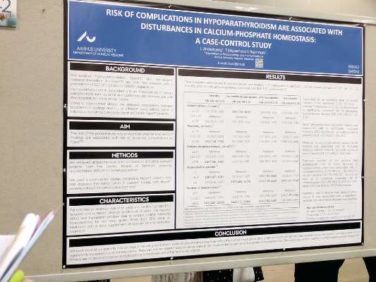FROM THE JOURNAL OF CLINICAL ONCOLOGY
Patients with multiple myeloma who received treatment from facilities that see a greater number of multiple myeloma patients have significantly lower overall mortality, compared with those who attend lower-volume facilities, new research suggests.
There is a strong body of evidence showing higher-volume surgical oncology is associated with better clinical outcomes, but there is a lack of similar studies for medical oncology, wrote Dr. Ronald S. Go and his colleagues at the Mayo Clinic in Rochester, Minn.
To investigate, researchers analyzed National Cancer Database data from 94,722 patients with multiple myeloma who were treated at 1,333 facilities. The median number of new multiple myeloma patients seen across all facilities each year was 6.1 patients, with a quartile range of 3.6 patients per year to 10.3.
Patients treated at facilities in the lowest quartile of patient volume had a 22% higher risk of death, compared with patients treated in the highest-volume–quartile facilities, Dr. Go and his colleagues reported (J Clin Oncol. 2016 Oct 26. doi: 10.1200/JCO.2016.68.3805).
Those in the third-lowest volume quartile had a 17% increased risk of death and those in the second-lowest volume quartile had a 12% increased risk, compared with the highest-volume quartile.
Overall, median survival times were 26.9 months for the lowest-volume quartile, then 29.1 months, 31.9 months, and 49.1 months for the second-lowest, second-highest, and highest-volume quartiles, respectively.
“Compared with facilities treating 10 patients per year, facilities treating 20, 30, and 40 patients per year had approximately 10%, 15%, and 20% lower overall mortality rates,” the authors wrote.
They noted that the relationship between patient volume and mortality was almost linear, with no obvious sign of a plateau. The magnitude of difference in mortality between the high- and low-volume institutions was also similar to that seen in studies of lung and rectal cancer surgery.
This relationship between patient volume and outcomes was independent of potential confounders, such as sociodemographic and geographic factors, comorbidities, and clustering of outcome within hospitals.
More than 60% of patients were treated in facilities within the top-quartile facilities with an annual patient volume of greater than 10.3 new patients a year, but only 18 of the 1,333 facilities treated more than 50 new patients with multiple myeloma each year, the investigators said.
Facilities in the top two quartiles were more likely to be academic, and their patients were more likely to be younger, black, and privately insured and to reside in metropolitan areas.
Commenting on their findings, the authors suggested that it should come as no surprise to see such a link between patient volume and outcomes, especially given the unprecedented rate of new drugs becoming available for the treatment of multiple myeloma and of new information being published about the disease.
“Keeping up with pertinent new knowledge in [multiple myeloma], which comprises only 2% of all cancers, and at the same time maintaining proficiency in its management, is becoming more difficult, especially if one also has to stay current in all the other cancers,” Dr. Go and his associates wrote.
They suggested an approach similar to that taken for oncologic surgery, with patients being referred to centers of excellence, although they noted that this approach should move beyond NCI-designated cancer centers alone.
Given the challenges inherent in setting up such a system to deal with rare chronic cancers, they also suggested an interim option of comanagement with a high-volume facility. “This model of care can be further enhanced by preferentially funneling patients with hematologic cancer to a limited number of hematologist-oncologists per practice to accelerate accumulation of clinical experience and development of treatment proficiency.”
The study was supported by the Eagles Cancer Research Fund Pilot Grant, Mayo Clinic division of hematology, and the Mayo Clinic Robert D. and Patricia E. Kern Center for the Science of Health Care Delivery. One author declared research funding from Genentech, but no other conflicts were declared.




